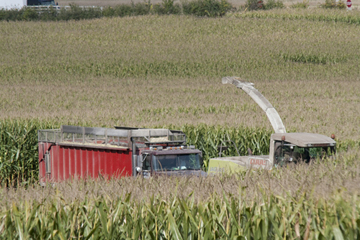 "For many corn growers, the 2011 growing season came to an end late last week over much of northern Wisconsin," notes University of Wisconsin's corn specialist, Joe Lauer. "Corn in many areas had not reached physiological maturity and was killed prematurely.
"For many corn growers, the 2011 growing season came to an end late last week over much of northern Wisconsin," notes University of Wisconsin's corn specialist, Joe Lauer. "Corn in many areas had not reached physiological maturity and was killed prematurely."Corn is killed when temperatures are near 32? F for a few hours, and when temperatures are near 28? F for a few minutes," says Lauer. "A damaging frost can occur when temperatures are slightly above 32? F and conditions are optimum for rapid heat loss from the leaves to the atmosphere, such as clear skies, low humidity, no wind. At temperatures between 32? to 40? F, damage may be quite variable and strongly influenced by small variations in slope or terrain that affect air drainage and thermal radiation, creating small frost pockets.
"Field edges, low-lying areas, and the top leaves on the plant are at greatest risk," notes the Wisconsin specialist. "Greener corn has more frost resistance than yellowing corn.
"Symptoms of frost damage will start to show up about 1 to 2 days after a frost. Frost symptoms are water soaked leaves that eventually turn brown," he says. "Because it is difficult to distinguish living from dead tissue immediately after a frost event, the assessment should be delayed 5 to 7 days.
"For fields that only had light frost damage, it is too early to harvest. Growing conditions may improve during September, allowing the crop to mature and produce reasonable grain and silage yields," suggests Lauer.
For fields that were harder hit by frost, farmers will need to manage frost-damaged corn silage and grain. For some useful guidelines, click here.









